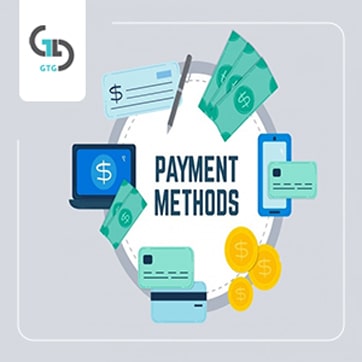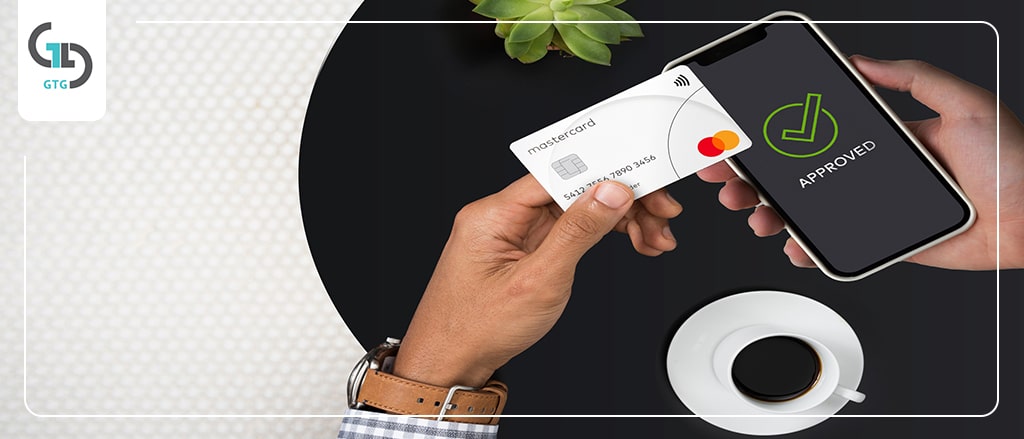

The sum of money for which the seller transfers the ownership of goods to the buyer can be paid in some different ways. In international trade, there are numerous payment methods that the merchants may use. Over time, international payment methods have evolved a lot to minimize the risk of non-payment. The seller and exporter select some particular payment methods according to their conditions and also the existing economic and political conditions. The selection of different types of international payments decreases the reception of the payment by the seller. In the following, the selection method and different types of international payments will be explained.

Nowadays, international trade plays an important role in meeting the needs of different countries across the world for different materials and goods. Many countries face many difficulties to facilitate living for their inhabitants and to preserve their economies.
International trade makes it possible for countries around the world to meet their needs as well as improving their economic growth. Also, they produce and export the goods they enjoy a relative advantage.
Selection of international payment methods
The selection of a payment method is done as a bilateral agreement between two parties, and it depends on some different factors. Some factors such as:
- The opportunity of getting finance and relevant costs
- The financial status of the parties to the contract, especially that of the buyer
- The political, economic, and legal status of the selling and buying countries
- The number of transactions, payment deadline, and transaction value
- Geographic distance between the buyer and seller
- The duration of cooperation between the parties to the transaction and the level of trust between them
Different types of international payment

The payment methods in international transactions vary depending on some different factors. The seller and buyer choose one of the different types of international payment methods based on their mutual trust and considering the economic and political conditions.
International payment methods are:
1: Cash advance payment
2. Open account- future payment
3. Clean-draft
4. Letter of credit
5. Currency remittance
In the following, each one of the international payment methods we mentioned will be explained:
Payment method
One of the easiest international payment methods that is based on mutual respect between the parties is the advance payment where the buyer should accept the risks and pay all costs of the product to the seller right at the beginning of the transaction along with the request for the goods. Then, the buyer should wait for the shipment of the given goods by the seller.
The required conditions to be met to use advance payment method:
- The seller and buyer should completely trust each other.
- The rules and regulations applied in the buyer’s country should permit them to fully pay the cash to buy the product.
- Statutory bar as to the exportation and importation of any given goods or services in the countries of origin and destination.
Drawbacks of advance payment method
The main drawback of this method is that the buyer (importer) should accept a high risk because if the seller delay shipping the goods and even, they refuse to ship them, or the shipped product does not fulfill the buyer’s expectations, it will damage the importer. Of course, it is possible to prevent such events to some extent through using some methods like foreign exchange letter of guarantee.

Open account trade
This method is the direct opposite of the advance payment method. In fact, in the case of using the open account trade, the seller should take a risk and send the goods to the buyer after signing the contract, and transfer the ownership of the good to the buyer. Therefore, trust and lack of statutory bars are also the overriding factors.
Some measures are also considered to remove the risk of open account risk. For instance, the goods can be shipped in different stages so that each part is shipped after the payment for the previous is made.
Draft payment method
This method is the completed form of the two previous methods where some drafts are signed by the parties involved to achieve greater trust and also some drafts are exchanged between them to guarantee the shipment of the goods. Draft payment is divided into two sub-methods, namely clean drafts and documentary methods depending on the fact that if the buyer sends the draft to the seller directly or through a bank.
Clean drafts payment method
In this method, the seller prepares a draft to be paid to the buyer after the agreement at the same as sending the goods, sends it. The buyer receives this draft directly that is known as clean drafts.
Documentary drafts method
In this case, the exporter (seller) draws up some documents in their correspondent bank to the draft to the given buyer’s country bank, rather than sending it directly to the importer (buyer), to enhance trust and lessen risks.
Depending on the type of the draft, that is, whether it is a visual or term draft, the documents will be sent to the buyer and the equivalent cash will be received and delivered to the seller. If the draft is visual, the due payment will be received after transferring the documents to the buyer. However, as for the term drafts, the buyer endorses the documents, provides a payment bond, and receives them. Then, the buyer refers to the bank on the due date and credits the given sum of money.
As for the documentary drafts, the banks have only an intermediary role and they do not provide any guarantee as to the payment of the money. However, some banks print their names on the drafts to somehow indicate some kind of guarantee to the seller.

Documentary letter of credit method
The documentary letter of credit involves the least risks among different types of payment methods, and it is widely favored across the world. In the documentary letter of credit method that is also known as LC payment, the buyer opens a bank account in the name of the seller and credits the given sum of money for each transaction to their bank account to ensure the seller.
Then, the bank pays the sum of money agreed upon by both parties to the seller at the request of the buyer according to the documents it receives from the seller of the goods in their country. Therefore, this method is beneficial both to the buyer and seller. Although, this method also has some drawbacks the most important of which is that it is time-consuming and costly nature of the opening documentary letter of credit in banks.
Different types of documentary letter of credit payment methods
This method can be implemented using through three ways in terms of payment commitments:
1. Revocable documentary letter of credit:
In this case, the buyer can terminate or change the credit without informing the seller. Therefore, the exporter runs a high risk by using this method.
2. Irrevocable documentary letter of credit:
In this case, any change requires the agreement and signature of both parties.
3. Confirmed irrevocable documentary letter of credit:
In the case of using this method, the exporter demands more guarantees from the bank of their own country.
Different documents in a documentary letter of credit payment method
1. Term documents
2. Visual documents
3. Refinance documents
4. Usance documents
Advantages of documentary letter of credit payment method
- Examination and assessment of exporter’s commitment before the payment
- Loading at some definite and short time
- The exportation and importation of goods with international standards and reasonable prices
- Receiving bank facilities to pay the exporter
- Receiving counseling from the bank on payment to the exporter
- Receiving counseling on how to pay through the bank
The advantages of documentary letter of credit payment method for the exporter (h4)
- Safe reception of the contract rate
- Receiving the goods price at one’s country
- The capability to receive the goods price after loading
- Possibility to receive counseling from the bank

Using each one of the above international payment methods in world trade and international commerce depends on the political and economic regulations of each particular country. For instance, concerning the fact that Iran has not joined WTO yet, the documentary letter of document method involves the least risk and it is the most widely used payment method. However, this method is less used in countries that are close neighbors and have good relationships. Of course, the drawbacks of this method made international bodies invent a new method named PBO that is similar to a documentary letter of credit; however, it is quicker and cheaper while being free of the complexities of the former method.
GTG TRADE

International payment methods are one of the main principles of a transaction. In this paper, we introduced and explain international payment methods used by businessmen. Please contact us in case of any need for counseling and further information on this with the counselors of GTGTRADE company.

